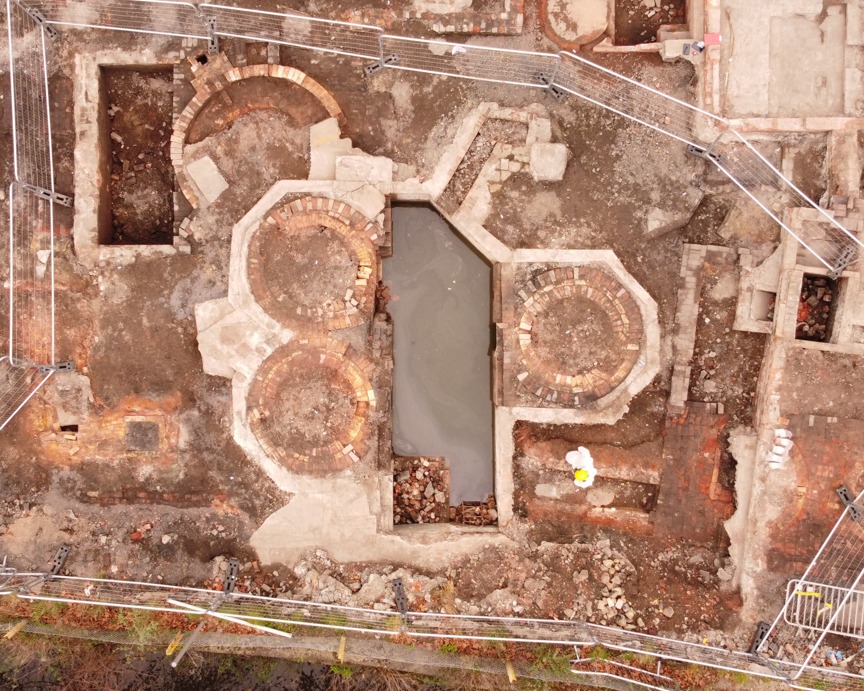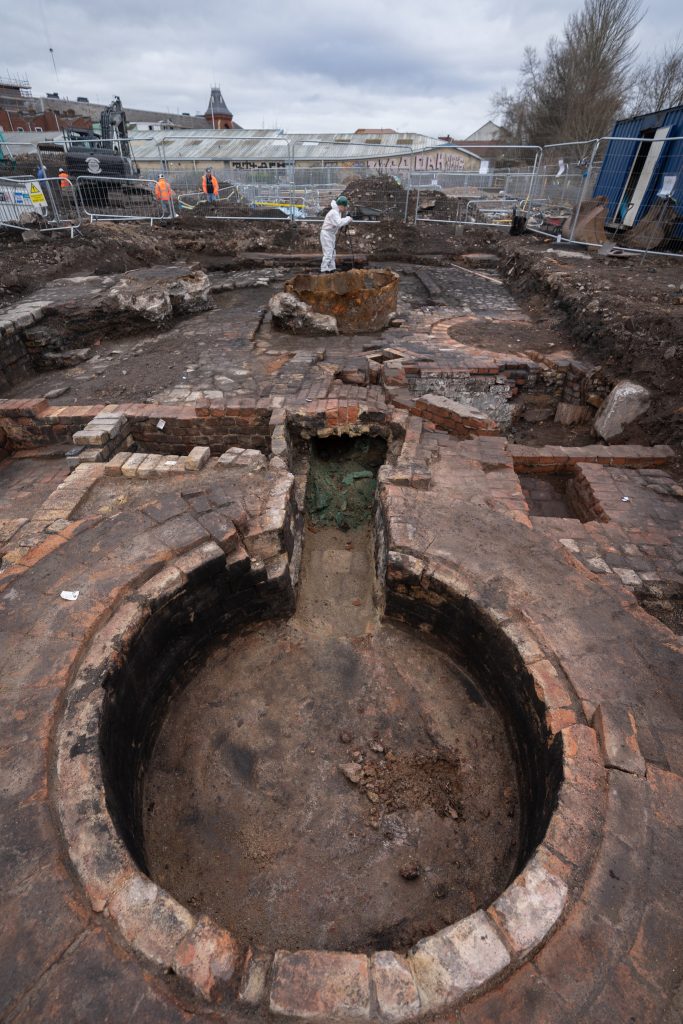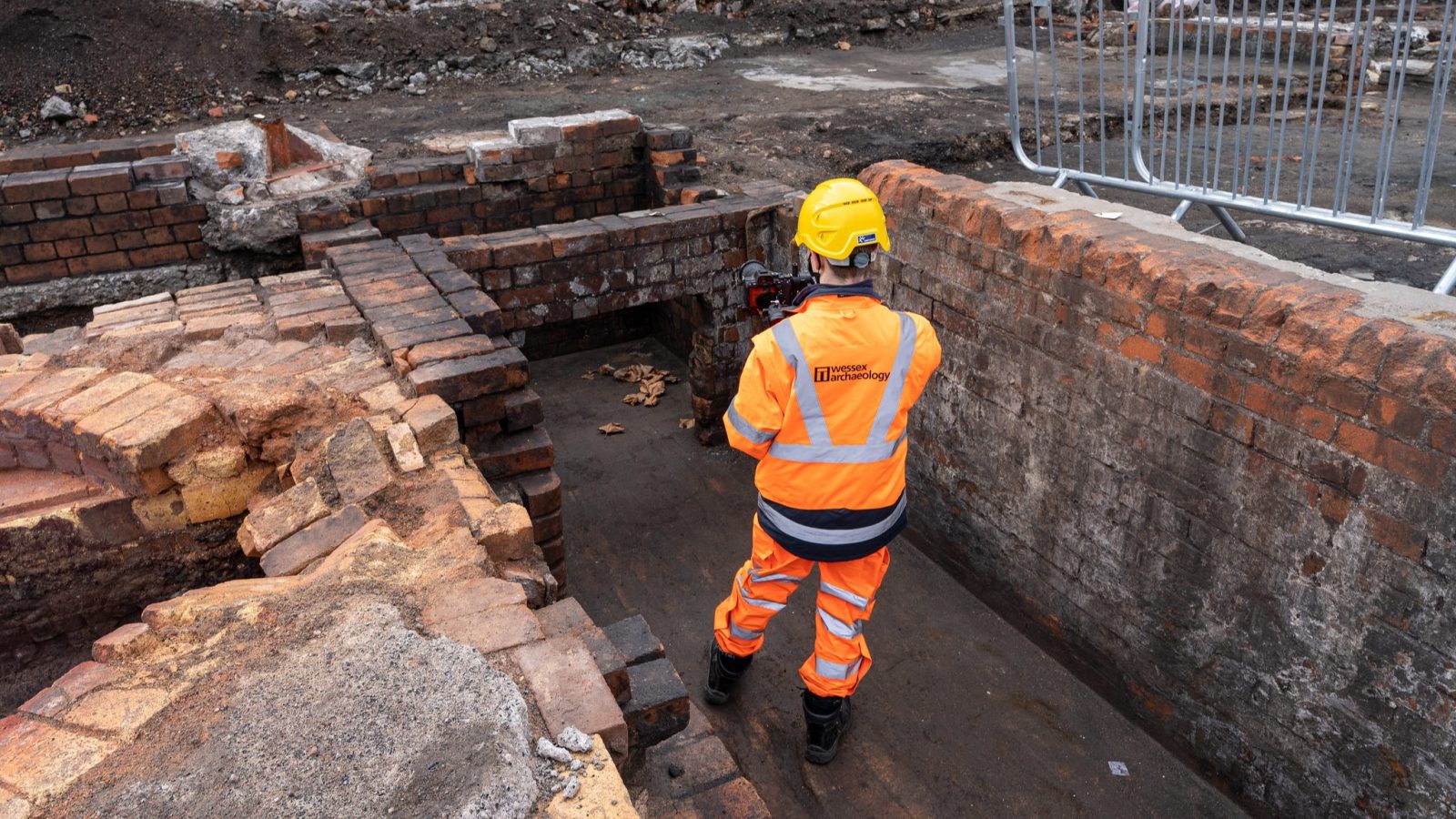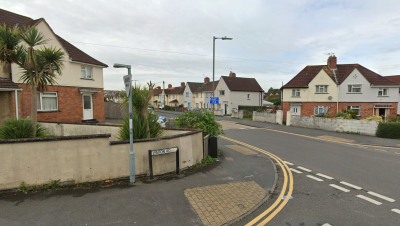News / Archaeology
Discovering the secrets of a Victorian smelting works
Excavations have unveiled some fascinating stories from a Victorian smelting works whose owners closely guarded the secrets of their astonishing commercial success.
Archaeologists who excavated the site of Bedminster Smelting Works found evidence that its smelting furnaces were built and rebuilt in quick succession as they honed their design.
This was “a clear sign that the company was constantly innovating” say the team at Wessex Archaeology and fortunately for its owners, these experiments “were destined to pay off”.
is needed now More than ever

An aerial view shows the complexities of the former Bedminster Smelting Works – photo: Bristol & Bath Heritage Consultancy
Bedminster Smelting Works were built in 1840 by metal refiner Capper Pass II and until the dig took place, “very little was known about the venture as the machinations of the smelting works had been a closely guarded secret in their heyday”.
For many years, the company barely broke even as they extracted a variety of metals from waste products as well as gold and silver from gilded buttons.
That is until 1866 when they discovered the highly profitable solder, what the Wessex Archaeology team describe as “the multi-purpose ‘glue’ of the Victorian era”: an essential product used for sticking all manner of metal objects together.
It was used for everything from candlesticks to apple-roasters but the real money spinner was food cans, with the rise of canning meaning that perishable goods could be stored safely for long periods of time, lowering the cost of food for Britain’s growing urban population.

Student accommodation has now been built on the site of the works – photo: Wessex Archaeology
“Increased access to piped water would also create a demand for solder, along with the burgeoning electrical and automotive industries,” say Wessex Archaeology.
“After World War One, when the market became oversaturated, the Pass family decided to turn to tin-smelting where they created several inventions that were closely guarded secrets.
“The astonishing success of the business led to a rags-to-riches style ascension for the Pass family: from Capper Pass I’s hand-to-mouth life marred by criminality, to Alfred Pass, who became a pillar of Bristol society and retired to a large country estate in Dorset.”
The site closed in 1963 and was subsequently levelled to make way for Dalby Avenue, St Catherine’s Place and a car park, and is now the location of student accommodation fittingly known as Metal Works.
Main photo: Wessex Archaeology
Read next:
 Our newsletters emailed directly to you
Our newsletters emailed directly to you




















